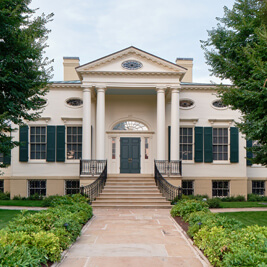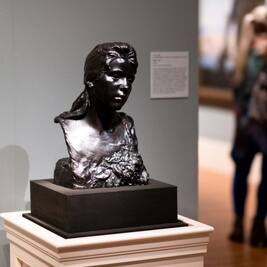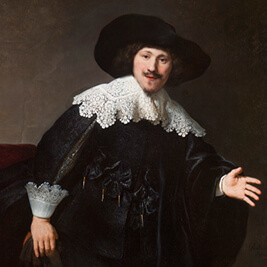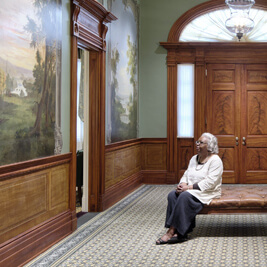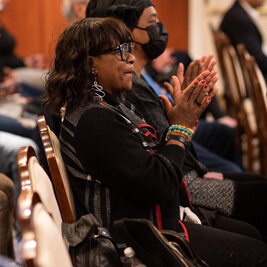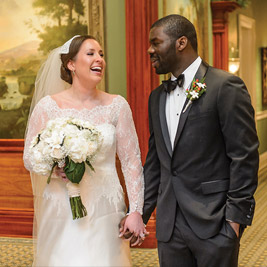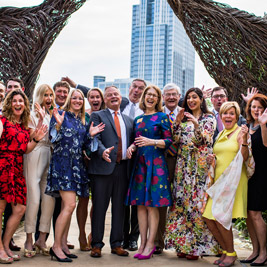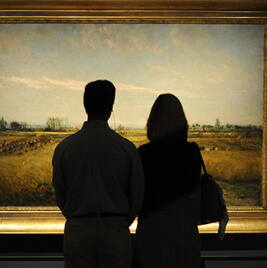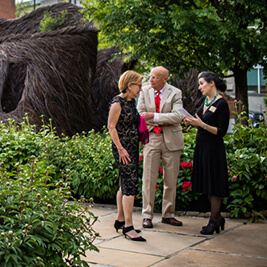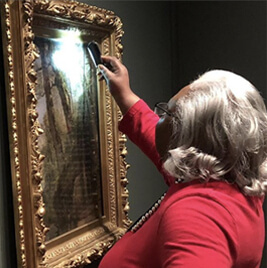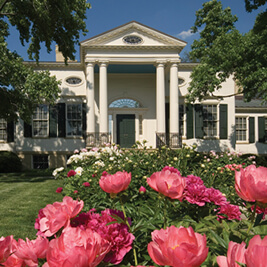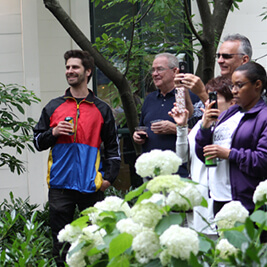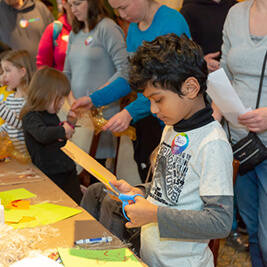- Do + See
- Dine + Host
- Give + Join
- Educate + Learn
Curating A Splendid Century
by Tamera Lenz Muente, Associate Curator
Three years ago, I was asked to put together an exhibition of Cincinnati art to celebrate the bicentennial of the Taft Museum of Art’s historic house. I would be creating an original exhibition for the Taft’s Fifth Third Gallery as well as writing an exhibition catalogue. One of the first steps, of course, would be locating works of art that were beautiful, compelling, and rarely exhibited. One of the questions I often hear is, “How did you go about choosing the works for the exhibition?” Here I hope to shed some light on that process.
Initial Inspiration
Ironically, I thought of the end of the exhibition first! Several years ago, the University of Cincinnati displayed its fine art collection at a gallery downtown, where I saw an incredible, large-scale view of Cincinnati by Herman Wessel. When I was assigned this bicentennial show, I immediately mused, “I have to have that painting!” It was before I had even conceived of the span of the exhibition—the 1820s through the 1920s, the 100 years during which the historic house was a private residence. Wessel completed his large triptych Jamming Barges Under the Suspension Bridge in 1921, about a century after the Taft historic house was built. It would end up being the centerpiece of the exhibition’s finale.
Background Research
After that first spark of inspiration, my task was to narrow down the concept, since 200 years is a lot of ground to cover in a single exhibition. How could I make the Taft’s show special? First off, since the show would be about Cincinnati, I focused my search for works in local private collections and museums within about 100 miles of the city. I also considered the best way to connect the exhibition to the historic house’s bicentennial. All the residents of the historic house—the Baums, Longworths, Sintons, and Tafts—had made an impact on the city’s visual arts. The period the historic house was a private residence was approximately 100 years: a splendid time for art in Cincinnati. So I had my framework!
Once I decided on 100 years of Cincinnati art, I began to read histories of Cincinnati. I particularly enjoyed reading first-hand accounts of the city's early years, which helped me set the stage in my mind and allowed me to visualize the conditions in which the artists worked. Cincinnati was a muddy, smelly, bustling place in the 19th century, but the Queen City also possessed a rich culture that expressed itself through the art of the time. I also read books and articles on art during the period, as well as 19th- and early-20th-century periodicals to get the lay of the land. The Cincinnati Wing at the Cincinnati Art Museum provided a wonderful visual resource for me. I made more than one visit to look at some of the best art made in Cincinnati from 1820 to 1920, and took many notes.
My Artist Wish List
From this research, I assembled a list of 52 artists I was interested in for the exhibition. This “wish list” included painters, sculptors, ceramicists, silversmiths, and woodcarvers, and I discovered more names once I started visiting collections. I could not include them all, so to narrow the scope I decided to focus on paintings, sculptures, and ceramics, although one drawing and one portrait miniature made their way into the final exhibition.
How did I find works of art for the exhibition? Locating objects in museum collections has gotten easier with the development of online collection databases, but not every institution has the resources to digitize its entire collection. For this reason, in some cases I contacted the curators with my “wish list” and also asked if their museums owned anything by artists with Cincinnati connections. The institutions I worked with included art museums, historical societies, and universities, and all were extremely accommodating. Once I identified works of interest, if they were kept in storage the curator or registrar accompanied me to examine them. Many historical society and museum collections are so large that they cannot exhibit everything at all times, which means some real gems are hidden from public view.
Private collections are kept in individuals’ homes. To gain access to these tucked-away treasures, I began contacting collectors the Taft had worked with in the past, and got leads to others from there. Cincinnati art collectors are generous people—all welcomed me into their homes and were thrilled to be able to share some of their treasures with the public. In institutional and private collections, I saw hundreds of beautiful and significant paintings, sculptures, and ceramic works by the greatest artists of Cincinnati’s past. I was able to present only 57 of them in the exhibition.
Final Cuts
While visiting collections, I took snapshots of every work of art that grabbed my attention. I wrote descriptions and noted all information that the curator or collector shared with me. Back in my office, I printed these snapshots to the size of postcards and pinned them up on my wall. Over time, I moved things around and replaced some images with others, working toward a good balance of artists, types of objects, and subject matter. Themes began to emerge that dovetailed with the eras of the historic house residents. This resulted in the final structure of the show.
I began visiting collections in January 2018, and by the spring of 2019 I had a final list of the 57 works for the exhibition. This process, however, was just the beginning. I then spent about six months researching each work of art more deeply and writing the exhibition catalogue. From there, I wrote the materials that our visitors would read on the walls.
After a four-month delay because of the museum’s temporary coronavirus closure, I was thrilled to finally be able to share A Splendid Century with our members and visitors! I hope you enjoy it.
